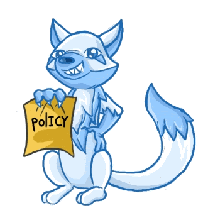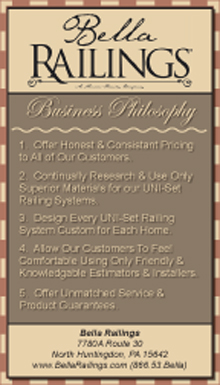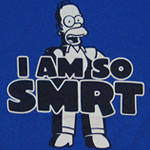 The other day I got a phone call from a guy who wanted me to join his association.
The other day I got a phone call from a guy who wanted me to join his association.
He made a strong case: reasonable dues, good people, great networking.
When he asked for the sale (or in this case, the membership), I paused for a few seconds before responding.
“Mark, my policy about saying no is, ‘I don’t say it enough.’ So, for that reason alone, my answer to you is no.”
Dead silence. I smiled and waited.
“Well um, uh … OK,” he stammered. “I-I guess I’m not going to challenge that.”
Dead silence. I smiled and waited some more.
“OK well, uh, thanks for your time Scott,” he resigned.
“My pleasure!”
I hung up the phone.
Whoa. Where did THAT come from?! I wondered.
That was a first for me. Telling someone my “policy” on saying no.
And I tell ya what; it felt GREAT!
Candid, yet friendly.
Honest, yet confident.
And nobody’s time was wasted.
LESSON LEARNED: people respond to policies.
So I looked up the word policy online. And according to my favorite website in the world, the word first appeared in 1406. One of its origins came from a Lithuanian word, pilis, or fortress.
Fortress. Nice. Talk about standing your ground!
But the definition of policy simply means, “shrewdness or prudence, especially in the pursuit of a particular course of action.” Which means:
You’re not being mean.
You’re not being difficult.
You’re not rejecting someone.
You’re simply sticking to your guns. Telling someone, “Look, this is how I roll. This is who I am. That’s my policy.”
NOTE: I’m not talking about company policy. Different animal.
I’m talking about personal policy.
Knowing thyself. Being the world’s expert ON yourself and confidently articulating that on a consistent basis.
The following steps will help you put this idea into practice:
POLICY PREPARATION
1. Brainstorm a list of 10-15 of your most valued personal policies.
2. Organize and type them out on a small card.
3. Carry that card in your wallet.
4. Look at it regularly.
5. Next time someone challenges one of your policies, whip out that card and ask them to physically read it back to you. (THIS IS CRUCIAL!)
6. Smile and wait for them to respond.
Oh, and they will. Every time.
Because people respond to policies.
LET ME ASK YA THIS…
What are some of your personal policies?
LET SUGGEST THIS…
Post them here!
* * * *
Scott Ginsberg
Author/Speaker/That Guy with the Nametag
www.hellomynameisscott.com

 Everyone is a writer. Writing is the basis of all wealth, as my mentor says. You need to be writing (something)
Everyone is a writer. Writing is the basis of all wealth, as my mentor says. You need to be writing (something)  Let’s say you’re on a sales call.
Let’s say you’re on a sales call.  People want to do business with (and be around) other people who have their own philosophy.
People want to do business with (and be around) other people who have their own philosophy. The other day I (thought) I was having an epiphany:
The other day I (thought) I was having an epiphany:  The first words out of your mouth frame the entire customer experience.
The first words out of your mouth frame the entire customer experience. “I’d gladly pay you Tuesday for a hamburger today.”
“I’d gladly pay you Tuesday for a hamburger today.”
 People are only taught to count the big things.
People are only taught to count the big things. Potential customers, fans, friends, family members, audience members, readers of your material, website visitors, and pretty much anyone else that comes into contact with your business needs to know three things.
Potential customers, fans, friends, family members, audience members, readers of your material, website visitors, and pretty much anyone else that comes into contact with your business needs to know three things.